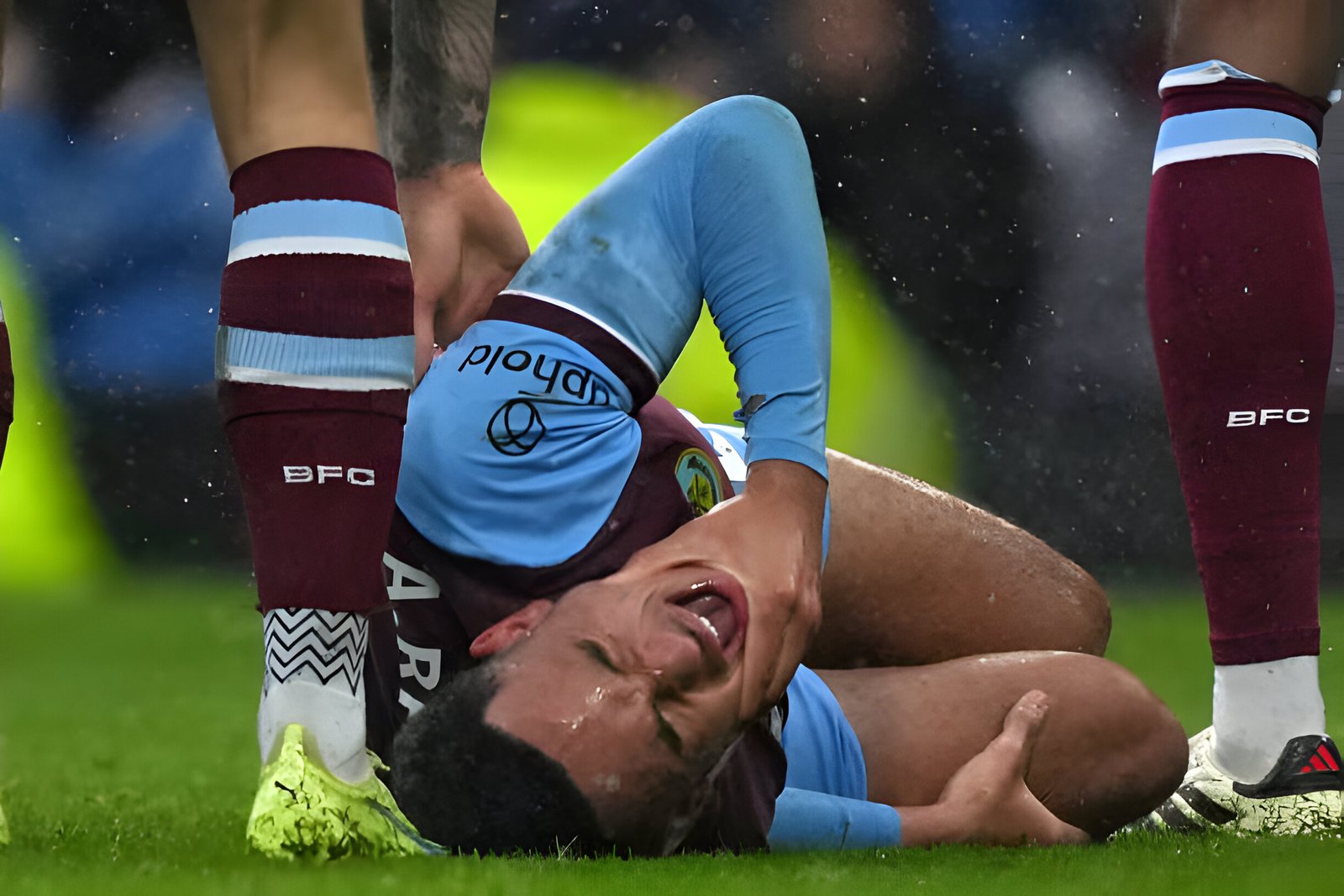Image Credits : Gettyimage
The unexpected Aaron Rodgers injury has sent shockwaves through the NFL community, leaving fans and analysts stunned. During his debut game with the New York Jets, the star quarterback suffered a devastating setback that has caused a stir in the sports world. The Aaron Rodgers injury video, which quickly circulated online, has become the focus of intense scrutiny as people try to understand what really happened on that fateful play.
This article delves into the details surrounding the Aaron Rodgers injury, examining the moment it occurred and its potential consequences. We’ll take a close look at the video footage to analyze the incident, explore the medical aspects of torn Achilles injuries, and discuss the impact on the Jets’ offense. Additionally, we’ll consider the team’s options moving forward, including the role of backup quarterback Zach Wilson and the decisions facing head coach Robert Saleh and the Jets’ staff.
The Moment of Injury: Analyzing the Video
The play-by-play breakdown
The Aaron Rodgers injury video has become a subject of intense scrutiny. The incident occurred during the first quarter of the New York Jets’ game against the Buffalo Bills. As Rodgers planted his left foot, his ankle was forced into dorsiflexion, stretching the muscles at the back of his leg. The video shows his calf musculature initially taut, with visible contours. However, within a few frames, there’s a sudden release of tension, suggesting a significant injury.
The telltale calf ripple
A key detail in the video is the visible “pop” or ripple through Rodgers’ calf as he pushes off under load. This telltale sign has raised concerns about a potential Achilles tear or rupture. The foot remains planted when this release of energy occurs, indicating that the injury happened before Rodgers’ foot left the ground. This observation has led many to speculate about the severity of the injury.
Also Read : Adriana Chechik Injury News
Comparison to Kevin Durant’s injury
The incident has drawn comparisons to NBA star Kevin Durant’s Achilles injury during the 2019 NBA Finals. Durant, who experienced a similar injury, immediately empathized with Rodgers’ situation. Both injuries occurred during crucial moments in their respective sports, highlighting the devastating impact such injuries can have on an athlete’s career. The comparison underscores the potential long-term implications for Rodgers and the Jets’ season.
Medical Perspective: Understanding Achilles Tears
Symptoms and immediate indicators
Achilles tendon ruptures (ATRs) are among the most common tendon injuries affecting athletes. The injury typically occurs during explosive activities, such as acceleration or deceleration while running. Patients often experience sudden, sharp pain in the Achilles tendon region, accompanied by a “snapping” sensation or an audible “pop” at the injury site. Some individuals describe a feeling similar to being kicked in the lower leg.
Upon examination, medical professionals look for signs such as tendon discontinuity or bruising around the posterior ankle. The Thompson test has an influence on assessing Achilles tendon continuity when a rupture is suspected. A key indicator in video analysis is the visible “ripple” effect through the calf muscle, which suggests a significant injury has occurred.
Long-term implications for athletes
ATRs have a substantial impact on an athlete’s performance and career longevity. In the NFL, players returning from an ATR often experience reduced play time and diminished performance in their first year back. While they may recover to baseline performance levels after 2-3 years, their NFL careers tend to be significantly shorter compared to uninjured peers.
Interestingly, the effects vary across different sports and levels of competition. For instance, NCAA Football Bowl Subdivision defensive players show higher return-to-play rates and maintain performance levels more effectively than their NFL counterparts. Age has an influence on recovery outcomes, with athletes over 30 facing increased risks of complications and reduced likelihood of returning to their previous level of play.
Recovery timeline and process
The recovery process for an Achilles tendon rupture is lengthy and complex. Initially, the affected area is immobilized for about two weeks post-surgery. Around the five-week mark, range of motion exercises and weight-bearing tests begin, often in low-impact environments like pools. By the two-month point, patients start to reduce their reliance on supportive devices and undergo balance and gait assessments.
At approximately three months, simple exercises such as calf raises may be introduced. Around the four-month mark, some football-specific activities might resume, provided the patient’s gait is correct and range of motion is close to pre-injury levels. The entire recovery process, including a return to high-impact activities, typically takes four to six months for average individuals, with professional athletes often requiring additional time to regain peak performance levels.
Conclusion
The Aaron Rodgers injury has undoubtedly shaken up the NFL landscape, leaving fans and analysts grappling with its implications. The video analysis and medical insights provided shed light on the severity of the injury and its potential long-term effects on Rodgers’ career. The comparison to Kevin Durant’s similar setback underscores the challenging road to recovery that lies ahead for the star quarterback.
As the New York Jets navigate this unexpected turn of events, they face tough decisions regarding their offensive strategy and quarterback situation. The team’s ability to adapt and rally behind backup Zach Wilson will be crucial in the coming weeks. While the road to recovery for Rodgers may be long and arduous, the resilience of professional athletes often leads to remarkable comebacks, leaving room for hope among Jets fans and football enthusiasts alike.
FAQs
1. Who was responsible for Aaron Rodgers’ ACL injury?
Aaron Rodgers sustained a season-ending ACL injury during Week 1 following a sack by Leonard Floyd, a defensive end for the Buffalo Bills.
2. How severe is an Achilles tendon injury in the NFL?
An Achilles tendon injury is quite severe due to the tendon’s critical size and function. Such injuries typically result in athletes missing at least an entire season, and they can sometimes be career-ending.
3. Which doctor performed surgery on Aaron Rodgers?
Dr. Neal ElAttrache, a well-known sports doctor who has also operated on Shohei Ohtani, was the surgeon who treated Aaron Rodgers. Dr. ElAttrache is recognized nationally, a rare feat for someone in his profession.




